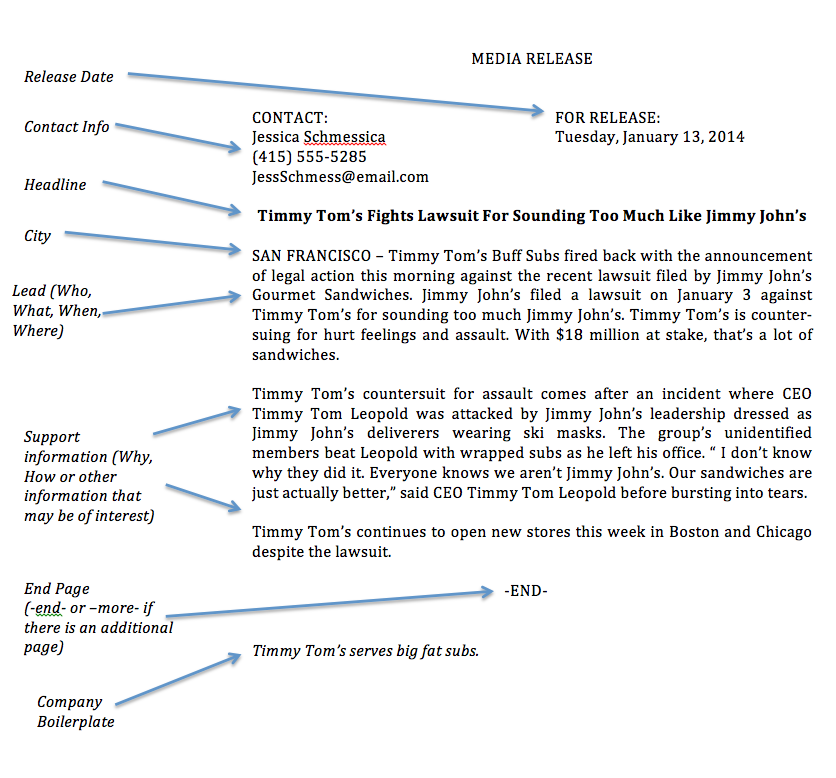For small nonprofits and businesses, it may seem impossible to interact with media without a marketing person on staff. But often there isn’t available funding for a communications position. Small business owners and staff of nonprofits often wear multiple hats though, and something like writing press releases doesn’t have to be out of reach. Review the following steps for a compelling press release.
Know the Structure
All press releases follow a similar structure, and it’s just a matter of plugging in new information in the right places. Here is an example of overall press release structure.

Capturing a Newsworthy Topic
Filling in the appropriate structure is one thing, but it’s important to have a press release about something newsworthy. What’s happening with your organization right now, and why is that relevant? Here’s a great list of press release topic ideas.
Targeting the Right Audience
Even when you hit a newsworthy topic, if the press release is sent to an outlet that doesn’t cover that type of news, the story won’t run. When deciding who to send your press release to, it is crucial to think about your target audience. If your nonprofit just received a grant for an arts program for toddlers, a sports magazine won’t be interested — but with a message that parents want to hear, a local family magazine would likely want to run the story.
Including Significant Details
Press releases should be no longer than two pages, and you want to lead with the most important details in the first paragraph. A detailed press release will also mean the reporter will know exactly what they need to follow up with you on if necessary. It’s beneficial to think of the 5Ws and How for writing a concise and to-the-point press release. Let’s continue with the example of a nonprofit receiving a grant for an arts program for toddlers:
-
Who awarded the grant?
-
What exactly was the grant for?
-
When did you receive it?
-
Where is the arts program that’s being funded?
-
Why is this grant important? / How will it affect the community?
Proofread
When including important details, you want to proofread. Get a fellow staff member to read it, too. Double check phone numbers, dates, and addresses because the information provided is what a reporter will use for the story, and you certainly want it to be accurate!
Expect a Follow Up
If you’ve got a great press release topic, media may want to follow up with you, so don’t consider the process over once you write and send the release. Make sure the contact person at the top of the press release is prepared to answer questions promptly since reporters will be writing for a deadline. Contact information for others who may need to be consulted for reporter questions is also good to have on hand.